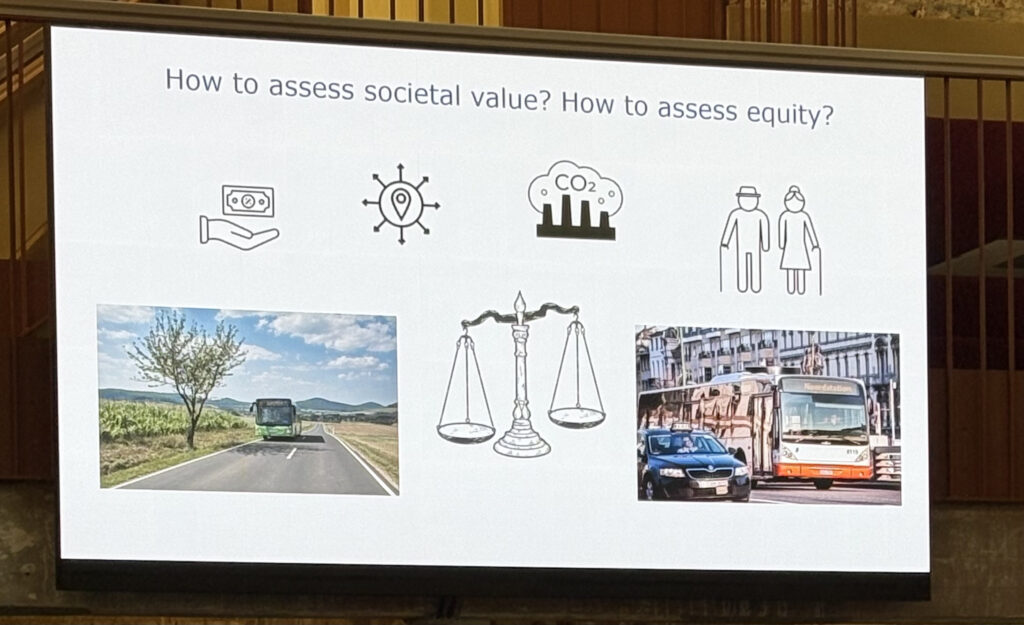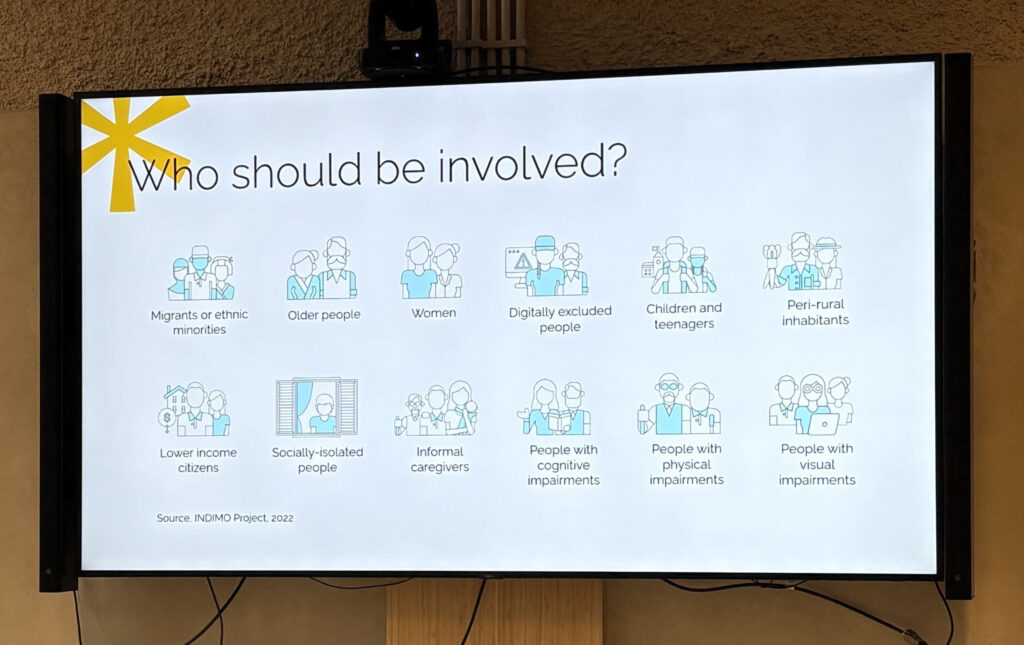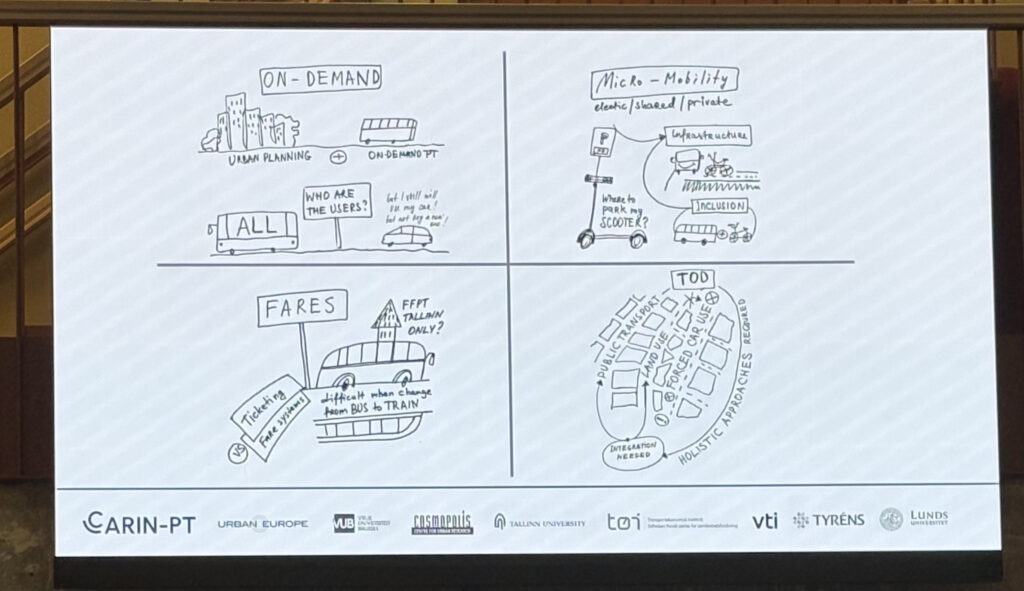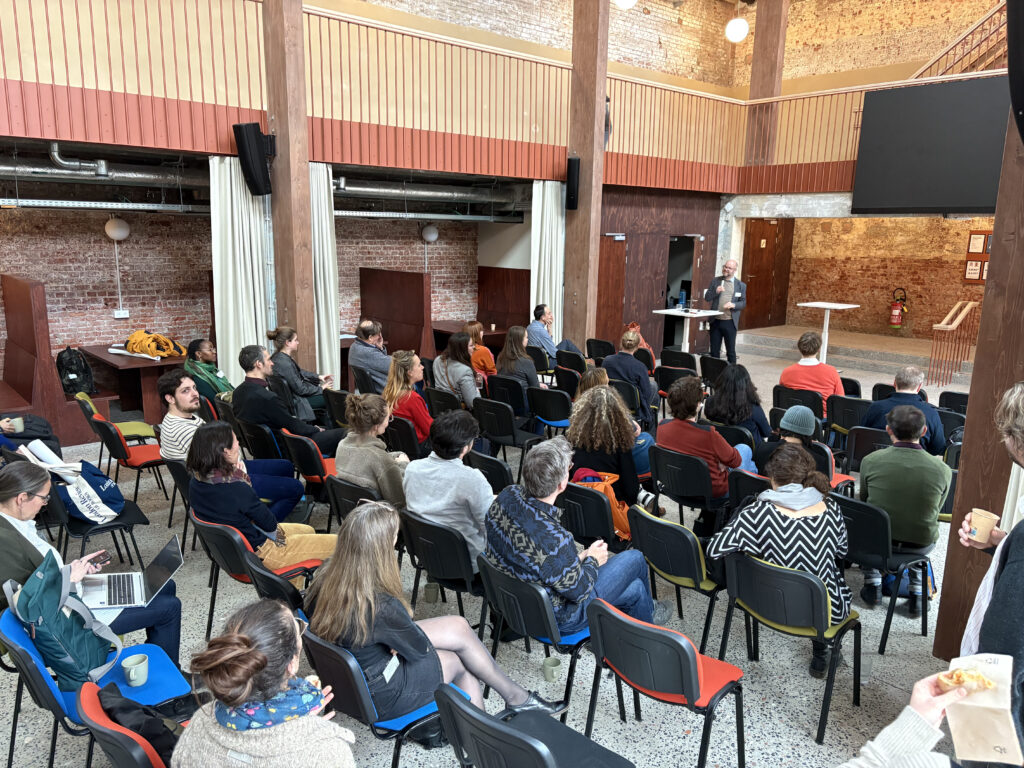I’ll be live blogging today from the Vrije Universiteit in Brussels, where Lina Olsson and I are presenting our work on the integration of human rights into transportation and municipal plans. This is the second conference we’ve attended on transportation equity, where we are presenting our research funded by K2, the Swedish National Centre for Transport.
CARIN-PT (Capabilities in Public Transport)
The hosts of this conference are working on a project which explores the relationship between social inequality and transport and includes researchers in four countries: Estonia, Sweden, Belgium, and Finland. Each team focused on a different area: transit fares and ticketing, on-demand transit, micromobility, and transit-oriented development, and each used Urban Living Labs to interact with a number of different stakeholders. The Talinn group found that the lack of fare integration between train and other public transit was a real barrier to use, even for people who lived close to a train station.
In Stockholm, studying transportation used by shift workers and women in Flemingsberg showed that women see safety concerns as a barrier to using public transit, the system is designed around peak hours and does not include public engagement in planning transit, and many people working non-standard work hours rely on walking, cycling, etc. Women are also concerned about road safety, fear of darkness (even changing their route in the winter months), and long travel distances while cycling.
The researchers in Flanders studied demand-responsive transit, finding that age, gender, and physical health influenced the use of this type of service. Far more female than male users do not have a car, and most live in rural and peri-urban areas with less access to amenities. Again, many users make trips outside of peak hours, find the system isolating and frustrating, and travel to places outside of the core areas–while the transport system has been designed around able-bodied commuters travelling during peak hours. Lived experiences of users with disabilities were dismissed as invalid and anecdotal by transportation planners/engineers.
The Finnish researchers studied TOD in Holmlia and Ås, two communities in the Oslo area. Holmlia transit users described the station area as poorly designed and maintained, and train cars were poorly maintained and overcrowded compared to the train to Ås, a wealthier neighbourhood.
Evaluating Equity in Public Transport
The session included research on cost benefit analysis from Simon Bothof from Vrije Universiteit Brussel. Unsurprisingly, issues of equity and inclusion are still being ignored in CBA and other quantitative methods for evaluating transportation options. Ruth Nelson from TU Delft discussed the inclusion of equity in transportation scenarios in Cape Town, South Africa–themes from their interviews, workshops, and scenarios included lack of political vision, transportation funding, lack of education among the public on transit, and lack of public engagement on transportation. Scenarios on integration of modes and active travel found that integration of modes and prioritized cycling lanes would make the biggest impact in addressing equity, while the current and business-as-usual scenarios would worsen equitable access to transportation. Geert te Boveldt found that in order to understand how a transport project addresses or aggravates fundamental needs, you have to take into account existing inequalities, total welfare and distribution (e.g. rural vs. urban service).
Dorcas Nthoki Nyamai‘s research in Nairobi showed that most of the informal paratransit routes went through the City Centre–if you remove this central node, their analysis showed that it was possible to reroute them through other nodes but this resulted in multiple transfers and longer travel times. In order to change this and respond to the growth of new commercial nodes in the country, many of the routes will have to be rethought. Dorcas also told us that many of the paratransit drivers allow users to ride on credit for a week before paying, something that is not considered by the mainstream transit provider.

Reimagining Just Public Transport
In our session, Mia Hesselgren from KTH in Sweden presented an interesting study that involved citizens in using different transport options: for car-oriented people, it was trying cycling, e-cycling and other options, while for public transit users, it was being able to access a car in off-peak hours. Dean Phélan and Madeleine Gan presented a project from Dublin that involved co-creation of public transport services in a small community of 12,000, prioritization of 20 suggested options. They noted that the top three options are already being implemented by the transit authority. Giovanni Lanza from Politecnico di Milano mentioned the concept of commoning–his research will involve collecting and mapping examples of community-created transport alternatives.
A People-Centred View on Public Transport Planning
Laura Lindegaard (Aalborg University) presented preliminary findings from a study of communication for people with cognitive disabilities. Announcements made on speakers (e.g. when there are interruptions to services), tend to use simple language, some are very information-heavy when providing instructions to passengers, and they are never repeated word for word. She argues that there may be the need for on-screen/written options for service announcements, or staff in stations to assist people with cognitive disabilities. Roger Mackett from University College London presented data from the British National Travel Attitudes Survey, which showed that fewer people with disabilities were using public transport, and that they were avoiding the use of these modes (train, metro, tram, bus) because the behaviour of other passengers made them feel unsafe, and most vehicles, stops/stations were not fully accessible. Seventeen percent of people with disabilities experienced some form of harassment, verbal threats, or assault, etc. Hannah Hook (Ghent University) presented her Master’s student’s work on the impact of Ghent’s Low Emission Zone on people with disabilities. Interviews showed that people understood the restrictions involved (e.g. not being able to bring their vehicle into the city) but not the boundaries of the zone, there was little knowledge about exceptions (e.g. that they could scrap their car for an incentive), and there was a perception that the policies were brought in without thoughts about the social consequences, when there are already barriers to using public transport.
Merlin Gillard and Sonja Faaren Ruud discussed the impacts of fare-free policies on public transport workers in Luxembourg. They found that with the abolition of fares meant that transit guards can’t issue fines to passengers (e.g. for poor behaviour), and there was a higher demand for guards in patrolling trains (they are present on 10% of trains). Transit operators had less interaction with passengers, were generally higher paid and were required to speak three languages; guards were usually not local and therefore did not necessarily speak all three languages, and have much lower salaries. While their jobs are not immediately in jeopardy from the fare-free transport project, transit operators speculated that they could be replaced (e.g. by AI) in the future while the guards considered their jobs secure.


